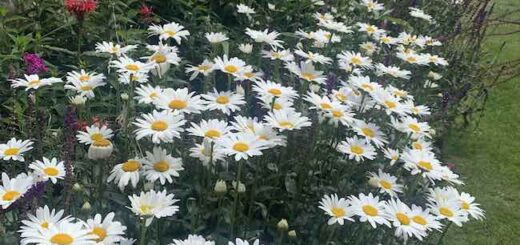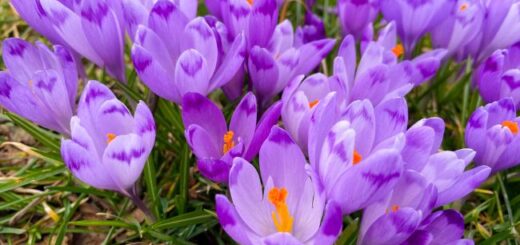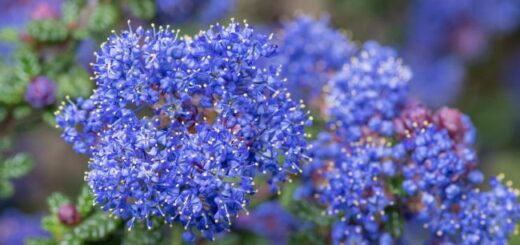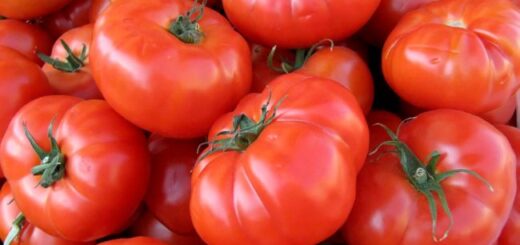GardenAdvice Weekly Gardening Calendar Second week in October

Autumn is now firmly underway — the perfect time for tidying, pruning, mulching, and preparing the garden for winter and the spring ahead. This week’s focus is on tidying, pruning, feeding, and planning — setting your garden up for a productive spring while protecting it through the wetter, windier months.
Every hour spent now will pay dividends when the first bulbs bloom and the new growth returns.
1. Cut Back Roses and Fuchsias After Flowering
Once flowering has finished, cut back fuchsias and shrub roses to around 18 inches (45 cm). This light autumn pruning helps prevent the plants being rocked by winter winds.
A more detailed pruning can be carried out in spring, once the buds begin to break.
After pruning, give each plant a feed of Growmore fertiliser — a handful (around 35–40 g) per 0.5 m², sprinkled evenly around the base.
2. Tidy and Mulch Borders
Now is an excellent time to weed borders, remove dead foliage, and tidy perennials.
Apply a clean mulch, such as spent mushroom compost, woodchips, or bark, to lock in moisture and protect the soil.
If you’ve had problems with annual weeds during summer, lay flattened cardboard on the soil before mulching — it will hold down weeds, rot away within 8–10 months, and enrich the soil as it decomposes.
3. Feed Pots and Plant Spring Bulbs
Give all pots and containers a final feed of a high-potash fertiliser (such as liquid tomato feed) to strengthen roots before winter.
Add bulbs like crocus, iris reticulata, and tulips for early-spring colour.
Plant bulbs at twice their own depth and in clusters of 8–15 bulbs for a stronger display.
(B&Q currently have excellent offers on crocus and tulip bulbs — a good time to stock up.)
4. Start a Wildflower Meadow
Autumn is ideal for starting a wildflower patch or mini meadow.
- Kill turf using black plastic or sheeting for about four weeks.
- Rake and prepare the soil to a fine tilth.
- Sow wildflower seed mixes suited to your soil type — Cornflower, Poppy, Oxeye Daisy, and Knapweed are excellent choices.
More detailed sowing and maintenance notes are available here.
5. Composting and Leaf Collection
As autumn leaves fall, start collecting them for leaf mould compost — it’s gold dust for gardeners.
Build compost bins from old pallets and feed the heap with Growmore every two months.
Keep the compost moist but not wet, and cover with old carpet or hessian to retain warmth over winter.
By next autumn, you’ll have rich, crumbly leaf mould to use as mulch or soil improver.
6. Apply Lime to Acidic Lawns
If your lawn soil is on the acidic side (below pH 6), now’s the time to apply granulated garden lime — about two handfuls per m².
Apply before rain or when the ground is damp.
The lime will gradually wash in, balancing pH and improving lawn colour and health through winter.
7. Prune and Train Climbers
When wisteria loses its leaves, prune back summer growth and tie new shoots onto supports or wires to guide next year’s flowering structure.
Likewise, prune back jasmine and clematis once they’ve finished flowering.
⚠️ Note: Jasminum nudiflorum is winter-flowering, so wait until after it blooms before cutting back.
8. Refresh Patios and Decking
Apply Doff Patio Cleaner or a similar product to remove algae and prevent slippery surfaces.
Simply water it on and brush it in with a stiff broom — winter rain will do most of the work over the next few months, leaving your patio clean and bright again by spring.
9. Feed and Protect Garden Borders
For general feeding, apply Growmore fertiliser at about one handful per square metre before winter mulching.
This ensures soil nutrients aren’t depleted by decaying organic matter.
It’s also worth feeding hedges with Growmore once a year to maintain their density and colour.
10. Plan Next Year’s Vegetable Beds
Although it may feel early, now’s the time to plan your 2026 vegetable garden.
Consider crop rotation to keep soil healthy and avoid disease build-up.
You can also sow green manure (like winter rye or clover) to protect bare soil, prevent nutrient loss, and boost fertility for next spring’s planting.





